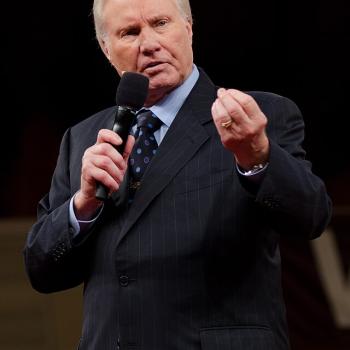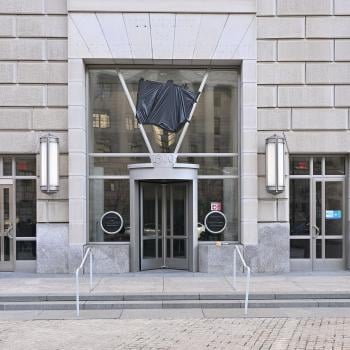Review of Apostles of Reason by Molly Worthen Part Two
Before reading this you should have read Part One which was posted earlier. Each installment of this three part review focuses on one of the three parts of the book. This one focuses on Part II: To Evangelize the World.
In Part II Worthen continues to hit the right notes. Here is how she ends this Part and Chapter 7 “Renewing the Church Universal”:
“By the final decade of the twentieth century, commentators who insisted on drafting all American evangelicals into “red state” ranks did so only by ignoring the diversity, ambiguity, and contradiction among believers who had learned to produce so many versions of their own history that one self-described ‘evangelical’ barely resembled the next.” (173)
How true. And yet, I would add, diversity has always existed among evangelicals. Again, I return to my suggestion that historians of evangelicalism learn to distinguish between an evangelical “ethos” and evangelical movements including the neo-evangelical, postfundamentalist movement this book is mainly about. Much confusion could be avoided if people simply recognized and worked with that distinction. What unites all evangelicals is a spiritual-theological ethos marked by five hallmarks (thanks to David Bebbington with the fifth added by me): 1) biblicism, 2) conversionism, 3) crucicentrism, 4) activism, and 5) respect for basic Christian orthodoxy. Even each hallmark takes on a somewhat different flavor among different evangelicals.
In Part II Worthen surveys the twists and turns within the postfundamentalist, neo-evangelical movement during the second half of the twentieth century. Many of these twists and turns presented challenges to the hegemony of the (mostly) Reformed, rationalistic spiritual-intellectual habits of the movement’s founders and leaders. For example, she writes about the evangelical discovery of imagination and the arts (Wheaton College’s Clyde Kilby is her main case study), the neo-Pentecostal and charismatic movements and their impacts on American evangelicalism, the evangelical discovery of the importance of anthropology for missions, some evangelicals’ love affairs with liturgy (“bells and smells”) (including some evangelicals’ conversions to Roman Catholicism and Eastern Orthodoxy), and evangelicals’ shaky encounters with ecumenism.
Worthen’s main point in this Part seems to be that the fragmentation of the neo-evangelical movement was inevitable as evangelicals left fundamentalist isolation behind and began to open up to the wider Christian and secular worlds. The neo-evangelical movement founded by Ockenga, et al., was primarily an intellectual-theological movement to enrich fundamentalist orthodoxy and shake off its cultic features. But an unintended consequence of this openness was defections from the fundamentalist habits of mind and heart the neo-evangelical founders and leaders kept from their fundamentalist backgrounds.
For example, the movers and shakers of neo-evangelicalism wanted (and still want) passionately to emphasize the propositional nature of revelation, verbal inspiration of the Bible and its factual inerrancy, Christianity as the only coherent worldview (Weltanschauung), rational apologetics (either presuppositional or evidentialist), premillennial eschatology, and calm, reasonable, orderly evangelism and worship, and a rather detailed vision of Christian orthodoxy tied to the “stout and persistent theology of Charles Hodge” (David Wells). Unrecognized by them was the degree to which this idea of evangelical Christianity was Western, white, male, Enlightenment-based and even American (or at least Anglo-American). Their rejection of fundamentalist isolation from culture and disdain of science and anti-intellectualism in general, however, led inexorably to a fraying of the edges of this monolithic and often totalizing evangelical narrative.
One case study of this that Worthen focuses on is the change wrought in evangelicalism by Bible colleges’ search for accreditation throughout the 1960s and 1970s. (I was in an evangelical Bible college when it went through this controversy with many conservative constituents and not a few students warning that accreditation would inevitably lead to a loss of the college’s distinctives.) Accreditation pressures eventually caused many fundamentalist-founded evangelical Bible colleges to either become liberal arts colleges (and then universities) or sink back into isolation and often oblivion. In the process of becoming liberal arts colleges and universities evangelicalism’s institutions of higher education imitated secular colleges and universities and absorbed elements that changed them and through them evangelicalism.
Neo-evangelical leaders both promoted and resisted such changes. This is, I believe, the basic paradox of American evangelicalism in the last half of the twentieth century. Its leaders craved respectability within the larger culture but at the same time resisted such respectability when it required changes in their founding vision of evangelicalism. They claimed to transcend fundamentalism in biblical interpretation (being more open to biblical criticism so long as it did not depend on naturalistic assumptions), openness to the arts and science, cultural engagement, intellectual life, etc. But as soon as any of this began to challenge neo-evangelical (often fundamentalist) sacred cows they reacted negatively in often very ferocious ways.
For example, Fuller Seminary’s shaking off of inerrancy as an evangelical essential brought about the over reaction of Harold Lindsell’s The Battle for the Bible and the ensuing battle over the Bible among evangelicals. For example, the 1960s and 1970s “young evangelicals’” social activism brought about harsh criticism from Carl Henry and other mainline neo-evangelical leaders for allegedly flirting with socialism and reducing the gospel to ethics. For example, the 1980s flowering of “new paradigm churches” and “signs and wonders” and “spiritual warfare” brought about knee-jerk rejection from many evangelical leaders. For example, “church growth” movement’s emphasis on using marketing methods to create “seeker sensitive churches” and grow them into mega-churches brought about harsh criticism from many evangelical leaders.
Perhaps the example Worthen offers that hits closest to home for me is neo-evangelicals’ reaction to the Jesus People Movement. Here’s an example. It was Easter weekend, 1971. I traveled with our college’s dean to the Tri-state Youth for Christ “rally” (convention) in Evanston, Illinois. Many colleges set up booths to recruit students there. The rally was held in a large arena and was organized and led by local Youth for Christ officials and pastors of supporting evangelical churches. Among the invited musicians were Larry Norman and Crimson Bridge. Almost all the musicians were radical “Jesus Freaks.” Larry Norman sang “I Wish We’d All Been Ready” and the youthful crowd went wild. Eventually the convention turned into a Jesus People event with lots of emotional praise and worship and hands waving in the air and even some speaking in tongues. Although Keith Green was not there, the event was a precursor to his style of music and worship. (If I recall correctly Green converted after this.) On Saturday afternoon the YFC leaders tried to shut down the event because of the non-traditional style of worship that was happening. One of the Jesus Freak musicians gently pushed the YFC official (in suits and tie) aside and took the microphone saying “Jesus isn’t done here yet!” The crowd applauded and shouted approval loudly and stayed long into the night. The YFC leaders left.
I witnessed this and now, looking back on it, I realize it was a microcosm of the tension Worthen is talking about—evangelicals seeking dynamic change and adjustment to God’s moving outside the confines of neo-evangelicalism while at the same time withdrawing as soon as things began to get out of their tight control.
I can personally resonate with Worthen’s argument about this tension within the neo-evangelical movement. The college I attended sought and gained accreditation but strongly resisted academic freedom. An adjunct professor who was hired because of his graduate degree(s) in psychology was let go because he taught behavior modification as legitimate (without naturalistic assumptions). An academic dean (the one who took me to the YFC rally in Indiana) was hired because he had a graduate degree from a mainline evangelical seminary but was fired because the president, who did not, was threatened by his intellectual prowess and openness to new approaches to hermeneutics (that he learned at the mainline evangelical seminary).
Almost every movement within the evangelical movement Worthen touches on in Part II has touched my life somewhere along the way. But most importantly, Worthen’s interpretation of all these events and their impact on the neo-evangelical movement (which I have been part of for much of my life) and neo-evangelical leaders’ reactions to them (which I have felt) resonate with me experientially as well as intellectually.
So what’s the “take away” for me? Some people view me as an “evangelical doyen” (to quote one critic). I don’t see myself that way, but I guess I have some influence among evangelicals. I do not want to make the same mistakes the neo-evangelical movement’s founders and movers and shakers made in the face of loss of control of the movement as younger, differently thinking evangelicals came up through the ranks and challenged their hegemony.












